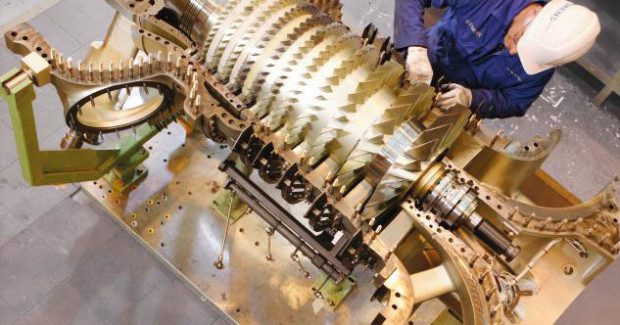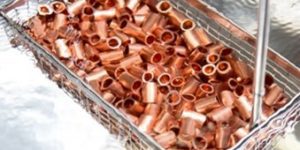Siemens Opens 3D Printing Plant for Metal Components
The new plant in Sweden will do rapid prototyping, manufacturing and repair of components in industrial gas turbines for the power industry.
Posted: February 26, 2016
Siemens AG (Munich, Germany) has opened a production facility for metal 3D printed components in Finspång, Sweden. The investment of around 200 million Swedish Krona (21.4 million euros) is the first step in the company’s plans for the mass manufacture and repair of metal parts with additive manufacturing. They already use rapid prototyping as a standard procedure and rapid repair in some commercial applications. This is a long-term investment to build up the skills and experience to lead to new ideas and developments in the field.
The facility features Direct Metal Laser Sintering machines from German AM leader, EOS GmbH (Krailling, Germany), which cost around $850,000 each. Electro Optical Systems was founded in 1989 and diversified into laser sintering of thermoplastic powders in 1994. EOS currently believes metal 3D printing has the biggest potential, particularly in aerospace and medical, and consequently, are focused on the development of their metal 3D printing portfolio. Their machines are already being used for the mass production of medical implants and flight critical parts in aerospace, including by GE Aviation.
IDTechEx (Cambridge, UK) reports that around 1,000 of these types of 3D printers will be sold in 2016, with a total market value of $540 million. Siemens is looking to develop new and improved components for the industrial gas turbine SGT-800 significantly faster, and shorten repair times from months to weeks. 3D printing can be used to shorten design and technology validation, reduce manufacturing process, reduce number of manufacturing steps, allow new materials, reduce quantity of material used, reduce cost, regionalize support, and reduce spare part inventory.
The workshop will employ 20 operators and engineers and will be used for rapid prototyping, manufacturing and repair of components in Siemens’ series of industrial gas turbines, for the power industry. Gas turbines are technically challenging to produce. They are complex and require broad knowledge in materials science, automation, and manufacturing. They must withstand high temperatures (up to melting point of iron), rapid temperature changes (up to above 1000 deg C in seconds) and high centrifugal forces as blade reach sonic speeds.
3D printing allows lattice structures with better heat transfer and fuel mixing, better coating adhesion, and new alloys. Siemens has demonstrated lattice structure in blades, fuel strainers and compressor impellers.
For more information, please see the IDTechEx research report “3D Printing of Metals 2015-2025” by clicking here.















